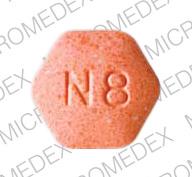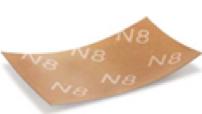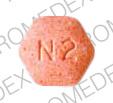
What is Suboxone?
Suboxone consists of buprenorphine as well as naloxone. Buprenorphine is an opioid drug, often known as a narcotic. Naloxone blocks the effects of opioid medications, which include pain relief or feelings of wellbeing that could result in the abuse of opioids. Suboxone is a treatment for the effects of narcotic (opiate) dependency. Suboxone is not recommended as a painkiller.
Alternatives to Suboxone
There are alternatives to opioids in different forms to treat addiction disorders caused by opioids. Discuss with your doctor to determine which one is most appropriate for you.
Buprenorphine
- Subcutaneous injection (Sublocade), implant (Probuphine), sublingual (Subutex)
Buprenorphine and naloxone
- Sublingual (Bunavail, Zubsolv)
Lofexidine
- Tablets (Lucemyra)
Methadone
- Tablets (dolophine)
Naltrexone
- IM injection (Vivitrol), Naltrexone tablets
In the event of an opioid overdose, when in a crisis situation
Naloxone
- Nasal spray (Narcan, Kloxxado), Naloxone injection
Other medicines that are related to them:
Buprenorphine for extreme pain:
- IM injection (Buprenex), sublingual (Belbuca), transdermal patch (Butrans)
Related drugs
Naltrexone, buprenorphine, buprenorphine/naloxone , Vivitrol, Subutex, and Sublocade
Warnings
Suboxone may slow or cease breathing and can cause habit formation. A MISUSE OF THE MEDICINE could result in addiction, overdose, or even death, especially for children or any other patient who is taking the medication that was not prescribed.
The use of Suboxone during pregnancy could trigger withdrawal symptoms that could be life-threatening for the baby.
The risk of fatal side effects could be expected if you mix the medicine with alcohol or other drugs that cause drowsiness or slow breathing.
Before you take this drug
Suboxone is not recommended in the event that you are allergic to buprenorphine or Naloxone (Narcan).
To be sure Suboxone is suitable for you, ask your doctor if you have previously had:
- Tooth issues, which may include the possibility of having a history of dental cavities;
- Breathing issues, sleep apnea;
- An increased prostate Prostate and urinary issues;
- Kidney or liver disease
- An abnormal curvature of the spine that affects breathing
- Issues with your gallbladder, thyroid gland, or adrenals
- A head injury, brain tumor, or seizures; or
- Alcoholism or addiction to drugs
If you are taking Suboxone when you are pregnant, your baby may become dependent on this drug. This can cause severe withdrawal symptoms for the newborn after it's born. Babies born dependent on opioids may need medical treatment for several weeks.
Talk to a doctor prior to taking Suboxone if you're nursing. Tell your doctor if you notice a sudden increase in sleepiness or slow breathing during breastfeeding.
How to take Suboxone?
Take Suboxone as directed by your physician. Follow the instructions on your prescription label and study all medication guidelines. Don't use Suboxone in larger quantities or for longer than prescribed. Talk to your doctor if you have a strong urge to take the medication. Before you take the Suboxone sublingual film, drink plenty of water to refresh your mouth. This allows the film to dissolve more quickly. Place one film inside your left or right cheek. If your physician advises you to use two films at once, then place the second film inside the cheek opposite. Place the films on your cheeks until they are completely dissolving. If your physician advises you to use the third film, place it inside the cheek on your left or right side after the previous two films have disintegrated. When the film is dissolving, be sure not to take it in a chewing or swallowing motion since the medication won't be effective.
Suboxone sublingual tablets are to be placed on your tongue for a few minutes until they disintegrate. Don't ever share Suboxone with anyone else, particularly someone who has an addiction history. A misusing of the drug can cause addiction, overdose, or death. Store the medicine in a location where other people can't access it. Giving away or selling Suboxone is a violation of the law. Cleanse the mouth with clean water after the Suboxone tablet has disintegrated. After one hour, wait until the tablet dissolves before brushing your teeth to avoid harming your gums and teeth. It is recommended to have regular dental exams while taking Suboxone. If you are switching between drugs that contain buprenorphine, it is possible to not be using the same dosage for all of them. Follow the directions with care.
Don't stop taking Suboxone at once; otherwise, you might experience uncomfortable withdrawal symptoms. Discuss with your doctor the best way to stop taking this medication. You'll need frequent blood tests to determine the function of your liver. All your medical providers should be aware that you're being treated for addiction to opioids and that you are taking Suboxone. Make sure that your family members are aware of what information to give in the event that they need to contact you in an emergency.
Do not crush or break the Suboxone sublingual tablet so that you can inhale the powder or mix it with a liquid for injection of Suboxone into your vein. This has led to the death of a patient. and children can't access it. Be aware of the medication you are taking. You must be aware if you are using the medicine improperly or without a prescription. your pharmacist for a disposal program that takes back the drug. If there's no take-back program available, you can remove all films that aren't being used from the foil package and flush the film into the toilet. The foil pack that is empty is in the garbage.
Details on dosage:
Usual Adult Dose for Opiate Dependence: Induction:
Inducing: For those who depend on heroin or other short-acting opioid products:
Initial doses should be taken when the signs of moderate withdrawal begin to appear. This should be no less than six hours after the time when the patient last had an opioid to avoid triggering one of the symptoms associated with withdrawal from opioids.
Suboxone Sublingual Film:
Day 1: Up to 8 mg/2 mg administered sublingually, start with a dosage of either 2. mg/0.5 grams or up to 4 mg/1. the titration of two or four mg doses at about 2-hour intervals.
Day 2: 16 mg/4 mg sublingually in one dose
Comments:
Patients dependent on heroin or other short-acting opioid products may be inducted with combination buprenorphine/naloxone or buprenorphine monotherapy. To avoid precipitating withdrawal during induction, initiation should occur when clear signs of withdrawal are evident, preferably when moderate objective signs of opioid withdrawal appear, and no sooner than 6 hours after the last use of heroin or other short-acting opioid.
Sublingual tablets of Suboxone are not recommended as an induction therapy. Sublingual film intended for buccal or sublingual use is only to be administered sublingually for induction purposes to reduce exposure to naloxone.
For patients who are dependent on methadone or other long-acting opioid products, buprenorphine alone should be utilized during the induction phase, as naloxone is absorbed in tiny amounts and may cause withdrawal or delay it during the induction.
The maintenance treatment begins at the end of day 3.
Treatment: for the treatment of addiction to opioids as part of a comprehensive treatment plan that includes psychosocial counseling and support.
Usual Adult Dose for Opiate Dependence: Maintenance:
MAINTENANCE Treatment:
Doses of buprenorphine or naloxone should be adjusted to a level that holds the patient in treatment and suppresses opioid withdrawal signs and symptoms; doses should be titrated to clinical effectiveness as rapidly as possible, as gradual titration may lead to higher drop-out rates.
SUBOXONE Sublingual Film and Sublingual Tablets:
Progressively adjust in increments or decrements of 2 mg/0.5 mg or 4 mg/1 mg to a level that holds the patient in treatment and suppresses opioid withdrawal signs and symptoms.
Recommended dose: sixteen mg/4 mg taken sublingually (film or tablet) or buccally (film) every day. Dose range of 4 mg/1 mg up to 24 mg/6 mg
Maximum dose: 24 mg/6 mg per day
Comments:
After the induction process, maintenance treatment is given to maintain a patient's treatment and reduce withdrawal symptoms and signs. There is no recommended maximum duration of maintenance treatment, and certain patients might require treatment for an indefinite period of time.
There are multiple buprenorphine and naloxone products available for maintenance treatment; these products are not bioequivalent, and dose adjustments may be necessary when switching products; e.g., Zubsolv 4.2 mg/0.7 mg buccal film provides equivalent buprenorphine exposure as Suboxone 8 mg/2 mg sublingual tablet.
Use: To treat addiction to opioids in conjunction with a comprehensive treatment plan that includes counseling and psychosocial assistance.
What happens If I miss a dose?
Do not take the medicine for as long as you can. However, do not take your missed dose if you are nearing the time to take the next dose. Don't take two doses at once.
What happens if I overdose?
Get medical attention immediately or contact the Poison Help line at 1-800-222-1222. An overdose of opioids could be fatal, particularly for children or anyone else who takes the drug without a prescription. Overdose symptoms may include extreme drowsiness, sharp pupils, slow breathing, or a lack of breathing.
What should be avoided?
Avoid drinking or consuming alcohol. Dangerous side effects or even death could happen. Avoid operating machinery or driving until you are aware of what the effect of this medication will be on you. Drowsiness or excessive drowsiness may cause accidents, falls, or serious injuries.
Side effects of Suboxone
Contact a medical professional immediately. If you show symptoms that you are experiencing an allergic reaction to Suboxone, such as hives, breathing difficulties, or swelling of your lips, face, or tongue,
Suboxone can cause breathing to slow or stop and may cause death. The person who is caring for you must administer Naloxone or seek medical attention if you experience breath that is slow, with long pauses or blue-coloured lips, or if it is difficult to get up.
Get your doctor's attention immediately or seek medical attention in an emergency in the event of:
- Or gums;
- Breathing that is weak or shallow and ceases during sleep;
- A feeling of lightheadedness that makes you feel like you're about to pass out.
- Incoordination, confusion, extreme weakness, confusion;
- Blurred vision, speech slurred;
- Liver issues upper stomach pain, a loss of appetite dark urine, black stool, jaundice (yellowing of the eyes or skin),
- Serotonin levels are high in the body and can cause hallucinations, agitation, fever, sweating, shivering, high heart rate, muscle stiffness, loss of coordination, twitching, nausea, vomiting, and diarrhoea.
- Low levels of cortisol and nausea nausea, vomiting, loss of appetite, dizziness, increasing tiredness or weakness,
- The symptoms of withdrawal from opioids symptoms of withdrawal from opioids: shivering and goosebumps; a more sweating sensation of cold or hot; a runny nose and eyes that water; diarrhea; and muscle pain.
Breathing problems that are serious could be more common in older adults, as well as those who suffer from debilitation or the syndrome of wasting, as well as chronic respiratory problems.
Common side effects of Suboxone include:
- Dizziness, drowsiness, blurred vision, and feeling drunk. Trouble getting your attention;
- Withdrawal symptoms;
- The tongue, redness, or numbness within your mouth;
- Nausea, vomiting, and constipation;
- Headache, back pain;
- Heartbeats that are fast or rapid, excessive sweating, or
- Sleep problems (insomnia).
This isn't a complete list of all the side effects. Other side effects could be present. Contact your physician to seek medical advice on the effects. You can report any side effects to the FDA at 1-800-FDA-1088.
Interaction with other drugs
There is a possibility of breathing issues or withdrawal symptoms if you take or stop taking other medications. Talk to your doctor if you are also using any antibiotic or antifungal medication. blood pressure or heart medicine, medication for seizures, or medication to treat HIV as well as Hepatitis C.
Opioid medications may interact with a variety of other medications and can cause serious side effects or even death. Be sure your doctor is aware if you are taking:
- Medications for allergies or colds or allergy medications, the bronchodilator asthma or COPD medication, or diuretic ("water pill");
- Medicines to treat motion sickness and irritable bowel syndrome medications for motion sickness, irritable bowel syndrome, or an overactive bladder
- Other opioids: pain medication for opioids and prescription medicine for cough
- A sedative that is similar to Valium: diazepam, alprazolam, lorazepam, Xanax, Klonopin, Ativan, and others;
- Substances that cause you to feel sleepy or reduce your breathing, such as a sleep pill, a medication to relax muscles, treat mental illnesses,
- Medications that alter serotonin concentrations in the body. a stimulant or medication for Parkinson's disease, depression, migraine headaches, serious illnesses, nausea, or vomiting.
This list isn't comprehensive. Other medications can interact with buprenorphine as well as Naloxone, such as medications that are prescribed and available over the counter, vitamins, and herbal remedies. There are many possible interactions that are not mentioned here.





